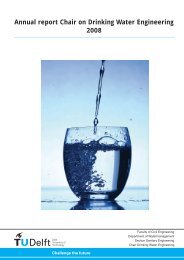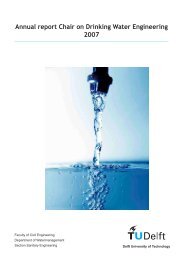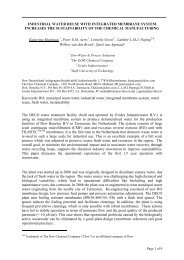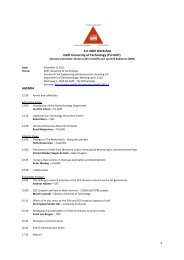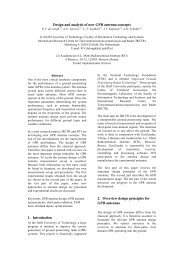Lecture Notes CT 4860 Structural Pavement Design Design of ...
Lecture Notes CT 4860 Structural Pavement Design Design of ...
Lecture Notes CT 4860 Structural Pavement Design Design of ...
You also want an ePaper? Increase the reach of your titles
YUMPU automatically turns print PDFs into web optimized ePapers that Google loves.
Figure 5: Low temperature associated block<br />
cracking observed on a highway in<br />
Minnesota.<br />
As mentioned before, low temperature<br />
cracking can be the major cause <strong>of</strong> maintenance<br />
and traffic associated cracking is<br />
only <strong>of</strong> secondary importance in such<br />
cases. However, when heavy wheel loads<br />
are passing a crack like the one shown in<br />
figure 4, high tensile stresses will<br />
develop at the crack edge simply<br />
because <strong>of</strong> the fact that there is no load<br />
transfer. This problem might increase<br />
during the spring when moisture enters<br />
the crack and weakens the supporting<br />
layers. All this means that although<br />
traffic associated cracking is not the main<br />
problem, traffic can cause accelerated<br />
damage development near cracks.<br />
A type <strong>of</strong> cracking that has many similarities with low temperature cracking is reflective cracking.<br />
In that particular case, a crack or joint in the layer underneath the asphalt layer tends to<br />
propagate through the asphalt layer. The problem <strong>of</strong>ten occurs in pavements with a cement<br />
treated base or overlaid jointed concrete pavements (figure 6). Reflective cracking can even<br />
occur in new pavements when the cemented base shrinks due to hardening. Shrinkages cracks<br />
that develop in the base can easily reflect through the asphalt top layer especially if this layer is<br />
thin. If however the cement treated base is pre-cracked or if shrinkage joints have been made,<br />
the problem <strong>of</strong> reflective cracking can be minimized.<br />
Figure 6: Example <strong>of</strong><br />
reflective cracking in an<br />
overlaid jointed concrete<br />
pavement.<br />
In these lecture notes we will concentrate on traffic induced cracking as well as reflective<br />
cracking. Low temperature is not considered because it is not really an issue in the Netherlands<br />
with its moderate climate.<br />
Of course cracks can develop for many other reasons then traffic and environmental effects. One<br />
example <strong>of</strong> such “another reason” is given in figure 7 which shows severe cracking in the<br />
emergency lane due to the widening <strong>of</strong> the embankment next to that lane. Due to the widening,<br />
excessive shear stresses developed in the existing embankment resulting in the development <strong>of</strong> a<br />
shear plane leading to severe longitudinal cracking not only in the emergency lane but also in the<br />
slow lane (this lane is already repaired as the picture shows). The problem was aggravated by<br />
8



